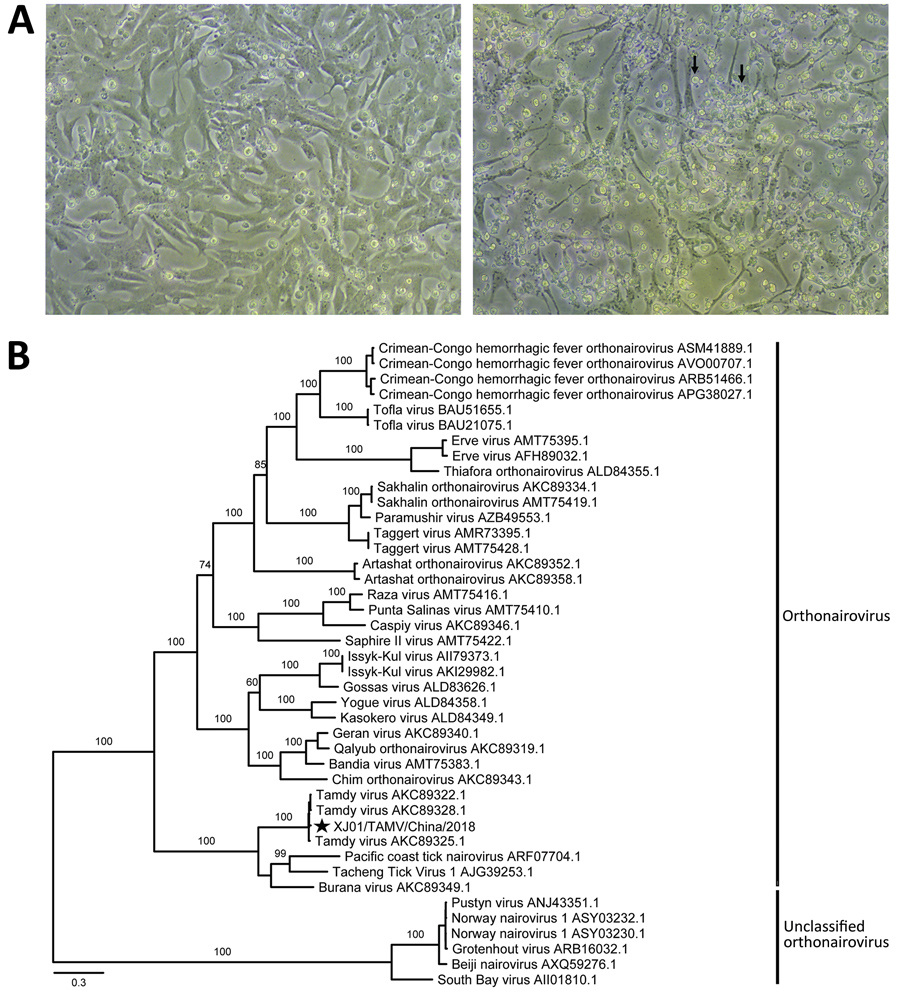Volume 25, Number 11—November 2019
Research Letter
Tamdy Virus in Ixodid Ticks Infesting Bactrian Camels, Xinjiang, China, 2018
Figure

Figure. Identification of the Tamdy virus (TAMV) strain XJ01/TAMV/China/2018 from Hyalomma asiaticum ticks infesting Bactrian camels in Xinjiang, China, 2018, by cell culture and phylogenetic analysis. A) Light micrographs of cytopathic effects caused by TAMV infection at 11 days postinfection. Left, normal Vero cells as control; right, infected Vero cells with apparent cytopathic effects (black arrows). Original magnification ×100. B) Phylogenetic analysis of the RNA-dependent RNA polymerase protein sequences of TAMV and representative viruses in the family Nairoviridae. Scale bar indicates nucleotide substitutions per site. Star indicates strain from this study.
1These authors contributed equally to this article.
Page created: October 15, 2019
Page updated: October 15, 2019
Page reviewed: October 15, 2019
The conclusions, findings, and opinions expressed by authors contributing to this journal do not necessarily reflect the official position of the U.S. Department of Health and Human Services, the Public Health Service, the Centers for Disease Control and Prevention, or the authors' affiliated institutions. Use of trade names is for identification only and does not imply endorsement by any of the groups named above.